#Polish-Soviet War
Explore tagged Tumblr posts
Text

Polish militiamen during the Polish-Soviet War in the summer of 1920.
56 notes
·
View notes
Text

Polski plakat propagandowy z okresu wojny polsko-bolszewickiej autorstwa Felicjana Szczęsnego Kowarskiego (1920).
#Polska#II RP#1920#wojna polsko-bolszewicka#plakat#Poland#1910s#Polish-Soviet war#poster#Second Polish Republic
28 notes
·
View notes
Text
youtube
August 15th is the anniversary of the 1920 Battle of Warsaw, the decisive event in the Polish-Soviet War (AKA: the Polish-Bolshevik War) which Poland won. ����🇱🏆
This war is one of about half a dozen which took place in Europe and nearby in the eight years after the official 1918 armistice which supposedly ended World War I. In the US, these wars are seldom taught in schools.
The Polish-Soviet War was the most strategically important one of those. It not only halted Lenin's plans to extinguish Polish independence but also thwarted plans to spread Communism throughout a Europe weakened by WWI.
Poland's situation in 1920 was probably weaker than that of Ukraine in 2022. It had just regained independence in 1918 and was still in the process of re-establishing itself as a national entity after having been split up three ways. Yet Poland was able to push back Lenin's military forces.
Those who today regard Russia as an omnipotent superpower are often ignorant of the historical record. The corruption, petty infighting, poor training, and incompetence of the Russian military have been around for a long time. Whenever they face organized and serious resistance, the Russians are stopped.
#battle of warsaw#poland#polska#1920#bitwa warszawska#cud nad wisłą#polish-soviet war#polish-bolshevik war#wojna polsko-bolszewicka#bolszewika goń#jozef piłsudski#vladimir lenin#russian imperialism#варшавська битва
5 notes
·
View notes
Text

Meanwhile in vatnik clownland…. According to the eloquent words of this eminent Russian historian, Poland has only existed since 1918.
However, back in the real world, this is yet another Russian lie, because Poland actually came into existence nearly a thousand years before that - in the year 966 to be precise.
Poland's name is derived from that of a West Slavic tribe - the Polanie ("people of the fields") - who settled in Central Europe in the 6th century. On 14th April 966, Mieszko I, the ruler of the Polanie, accepted Christianity through the auspices of the Roman Church and this is generally accepted by real historians as the founding event of the Polish state.
In 1025 Poland became a kingdom, which later united with the Grand Duchy of Lithuania in 1386. Nearly two centuries later, in 1569, the Union of Lublin formally established the Polish–Lithuanian Commonwealth, a huge multi-ethnic state which was regarded as one of Europe's great powers at the time. A century later the Commonwealth began a spiral of decline which led to its eventual demise at the end of the 18th century, when it was taken apart by its neighbours - Prussia, Austria-Hungary and Russia.
The first attempt to resurrect a Polish state was the creation of the Duchy of Warsaw in 1807 by Napoleon, which only lasted a few years before disappearing from the map again after Napoleon's defeat in the east. Uprisings in 1830 and 1863 were also brutally suppressed.
However, the Polish people never lost their sense of identity, and despite attempts to germanise and russify them, preserved and passed on their language and culture from one generation to the next until Poland finally regained its independence in 1918, with the creation of the Second Polish Republic, which established and successfully defended its borders over the next two years after victorious conflicts with Germany and Soviet Russia.
In 1939, Poland was invaded and partitioned once again - by Nazi Germany and the USSR - and remained under Soviet occupation until 1989, when communist rule was peacefully overthrown and Poland once again re-established itself as a democratic state, initiating the collapse of the Soviet bloc….
#poland#polish-lithuanian commonwealth#partitions of poland#duchy of warsaw#history#first world war#independence#polish-soviet war#silesian uprisings#second world war#soviet bloc#russia#vatnik#vatnik clownland#bad history take#bad history takes
2 notes
·
View notes
Text
Adrian Carton de Wiart
This week’s episode ‘Adrian Carton de Wiart’ is up!
Today’s tale picks up 18th November 1914. The setting Shimber Berris, the tallest mountain in the African state of Somaliland. The Kharif, “a hot labouring wind heavy with sand” was in full force, but up in the hills that day the air was quite pleasant… Actually, a slight correction, the air was heavy with waves of red hot bullets flying in around head height. While this kind of weather isn’t to…
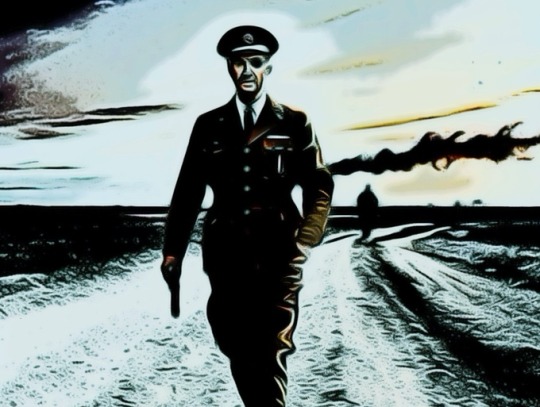
View On WordPress
#19th Century#20th Century#Adrian Carton de Wiart#Arras#Boer War#Cambrai#English History#Mohammed Abdullah Hassan#Passchendale#Polish Lithuanian War#Polish-Soviet War#Polish-Ukrainian War#Prince Karol Radziwill#Shimber Barris#Somme#World War One#World War Two#Ypres
0 notes
Video
youtube
Stemming The Tide
0 notes
Link
In late 2022, a report on Belarus’s state-funded media singled out the mural in the Soly church, accusing it of “inciting national and religious hatred.” The report also claimed priests of the church “do not care about saving souls, but about returning western Belarus to Poland.”
The painting had reportedly previously been covered up by Soviet authorities, then was revealed and re-sanctified after the fall of the U.S.S.R.
#Belarus#Roman Catholic churches#Polish cultural heritage in Belarus#history#U.S.S.R.#murals#art#Belarus–Poland relations#Miracle on the Vistula#Polish-Soviet War
1 note
·
View note
Text

The Soviet invasion of Lviv. September 1939.
#ukrainian history#vintage ukraine#soviet union#polish history#1930s#world war ii#second world war#20th century#imperialism#colonialism#russian history#lviv#ukraine#1939#black and white#september
39 notes
·
View notes
Text
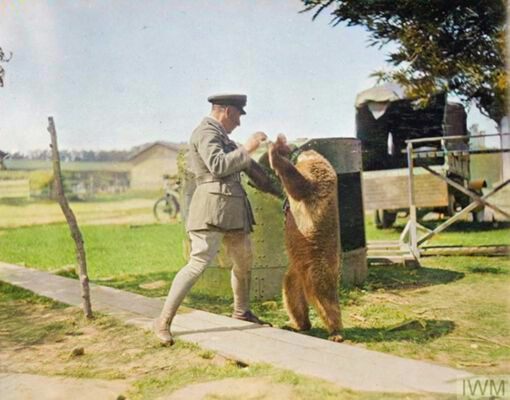
Officer of the Russian Armoured Car Division playing with a divisional mascot, a bear called Miskab, in Vladikavkas, August 1916. Note a dismantled armoured car's turret in the background.
#historical photos#world war 1#history#canadian history#1917#russia#russian#russian history#soviet#polish#french#ww1#ww1 poetry#ww1 stories#ww1 art#ww1 history#wwi#world war one#The Great War#The First World War
82 notes
·
View notes
Photo
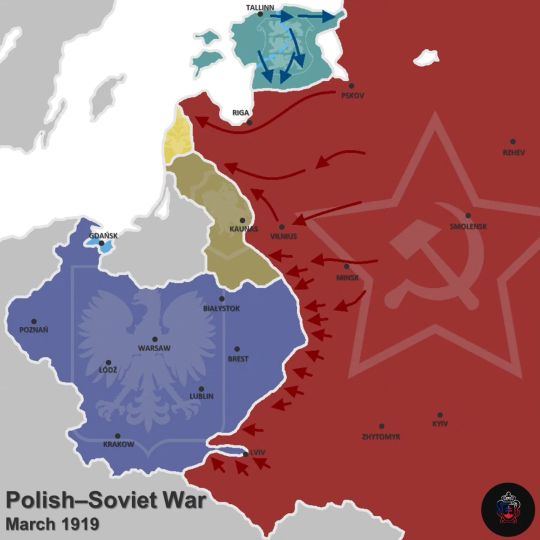
The Polish–Soviet war [1918/1919 - 18 March 1921] was fought primarily between the Second Polish Republic and the Russian Soviet Federative Socialist Republic in the aftermath of World War I and the Russian Revolution, on territories which were previously held by the Russian Empire and the Habsburg Monarchy following the Partitions of Poland
by _slovak.mapper_
52 notes
·
View notes
Text
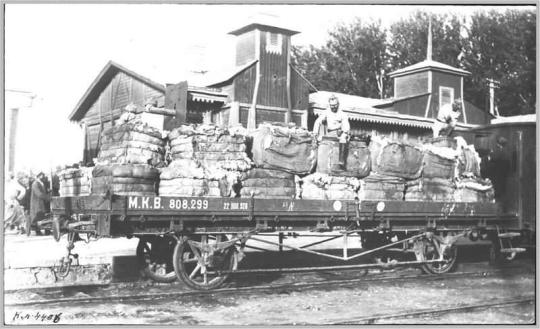
Red Army armored train car during the Soviet-Polish war of 1920. Rail car is armed with Maxim machine gun.
47 notes
·
View notes
Text

Żołnierze 3 Dywizji Piechoty Legionów przygotowujący się do obrony (1920).
#Polska#II RP#1920#wojna polsko-bolszewicka#Poland#1910s#Polish-Soviet war#Second Polish Republic#old photo
26 notes
·
View notes
Link
The article "Foreign Weapons at the Nazi’s 'Atlantic Wall'" by Tom Laemlein, published on The Armory Life, provides an in-depth look at the extensive use of captured foreign weaponry by German forces during the defense of the Atlantic Wall in World War II. Severe manpower and industrial shortages prompted the German military to employ a wide array of guns from across Europe, including French, Czech, British, Polish, and Russian weapons. This diverse arsenal included notable firearms such as the French MAS-36 rifle, the Czech ZB vz. 26 machine gun, British Vickers and Bren guns, and the Polish CKM wz. 30 machine gun. Additionally, the article highlights the strategic movement of Red Army conscripts, known as "Ostruppen," who were coerced into fighting for Germany, bringing with them Soviet small arms like the DP-27 and the SVT-40. The capture and utilization of these varied weapons underscore the desperate measures taken by the Germans as they faced overwhelming Allied forces during the pivotal Normandy invasion, ultimately contributing to the Allies' breaching of the Atlantic Wall and the subsequent fall of the Third Reich.
#German Wehrmacht#Atlantic Wall#Nazi Germany#World War II#coastal defense#military fortifications#foreign weapons#captured equipment#Soviet weaponry#Czech arms#French firearms#Belgian guns#Danish weaponry#Russian artillery#Italian machinery#Polish armaments#Norwegian equipment#British military gear#defensive strategy#European conflict#Allied forces.
2 notes
·
View notes
Text
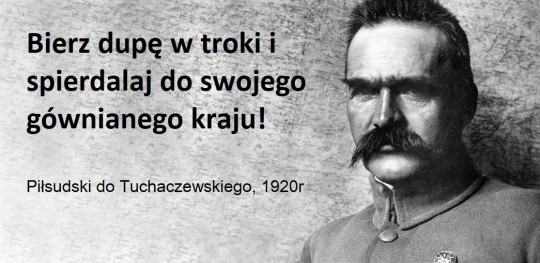
SPIERDALAJ - the world revolution that never happened....
Russian general Mikhail Tukhachevsky commanded the Soviet invasion of Poland during the Polish-Soviet War. In a pre-invasion speech he issued the following call to arms to his troops: "The fate of the world revolution is being decided in the west! The way leads over the corpse of Poland to a universal conflagration….On to Vilnius, Minsk and Warsaw - forward!" Fortunately, the world revolution had to be cancelled because Poland defeated the Soviets. After the victory, Polish commander Józef Piłsudski told Tukhachevsky to…."get off your arse and fuck off back to your shitty country!" If only today's politicians had the nerve to talk to Russians using the kind of language they understand….
#history#poland#polish-soviet war#battle of warsaw#spierdalaj#red army#soviet russia#world revolution#cancelled#1920
14 notes
·
View notes
Text
Imagine you're baby Ernestyna Leserówna. The year is 1905. You are 16. You live in Kraków. Your father is dying. Then there's a school strike and a Revolution. Many miles and one imperial partition-border away in Kongresówka Łódź, your future personal assistant and close confidante Leonia Jabłonkówna is born. When Jelonka turns 16, an independent Poland will enter into the Peace of Riga, establish its fixed borders, and ratify the March Constitution. History happens to my beloved dead so much
#stefania tag#jelonka tag#like imagine your adolescence/young adulthood and childhood/adolescence#happening between the 1905 revolution WWI the polish-soviet war and independence#they are creatures of history they are historical subjects par excellence
4 notes
·
View notes
Text
I think the fundamental problem I have with the Star Wars Sequel Trilogy is how they completely undermines the ending of RotJ.
In real life, I allow, it absolutely happens that 20 years after one great war there is another. Historical victories aren't clear cut like that. But let's be clear: if Star Wars worked like history does the rebellion wouldn't have won in the first place.
So let our heroes have their happy ending! Let them stay heroes. Don't do that.
#Continuing with the parallels to 20th century history#the resistance movements in german-occupied europe *didn't* achieve victory#the great powers did and the resistance movements only had happy endings in so far as it fitted those powers#after the war the leaders of the polish 'home army' were executed by the soviets - who are a whole new issue that complicates things - the#'good guys' aren't that pure here though for once the 'bad guys' *are* bad - but anyway#this wouldn't have happened if this was a story like the ones movies like star wars tell#long long ago in a galaxy far far away#original post#star wars#star wars sequels#sequel negative#return of the jedi#rotj
12 notes
·
View notes